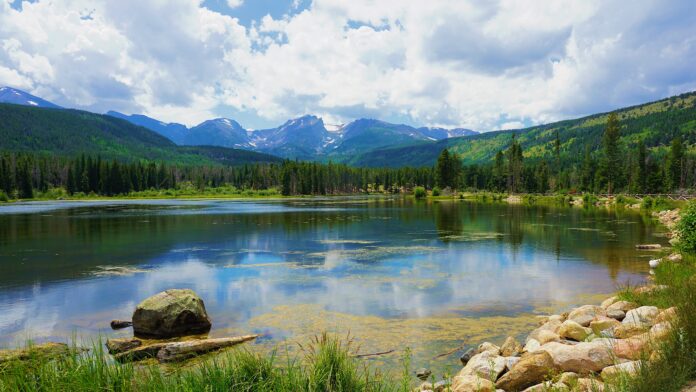
Rocky Mountain National Park is known for its beautiful lakes, stunning mountain views, moose encounters and scenic drives. Modern visitors to the park can spend days driving through it, including testing your car’s altitude capabilities on Trail Ridge Road. However, soon after the park’s inception, two superintendents were caught up in a years-long legal fight over commercial transportation that would ultimately lead to the U.S. Supreme Court.
In 1919, four years after the park’s official founding, the administrators of the park granted an exclusive contract to the Rocky Mountain Parks’ Transportation Company to drive people around the park. In granting this deal, the administrators held no public hearings and accepted no competitive bids. Coloradans were only informed of this new monopoly after it was granted.
At first, the only group opposed to the deal was a small group of Estes Park hotel owners, including Enos Mills. L.C. Way, the superintendent of the park, warned Mills that his car had been seen carrying passengers. Mills didn’t deny it and he told Way he planned to build a test case to see if the park’s concession could be enforced.
Two days later, Mills called to inform Way his car would be in the park, and Way should take appropriate action. Way intercepted the car himself, ordered Mills to leave and told him not to come back unless he had written permission from the director of the National Park Service.
Mills’ attorney called Way and his car was again spotted in the park. Others started following Mills’ example and began driving passengers through the park.
Complicating the park’s position in the matter was the jurisdiction over the roads in the park. While the park had granted the monopoly over roads controlled by the park, the state of Colorado hadn’t actually given over its jurisdiction of the roads to the park service.
Way tried to mediate with the transportation company and Mills. The transportation company refused to compromise, and told Way it ”was as good a time as any to fight out this case and find out where they stand.”
Way investigated the legal status of the park’s roads. He believed no one could claim ownership of the land of the principal ownership of the park, which was developed 40 years before on public domain. Way also believed the Federal Act of 1866 only granted certain easements over public domain, rather than transferring title. In addition to his own research, Way was informed by Colorado’s first Attorney General H.E. Curran that a transfer of jurisdiction would require legislative action.
Mills filed a complaint against Way in the District Court of Colorado. He cited Sections 2 and 3 of the Rocky Mountain National Park Act, which excepted from federal control valid rights of way and land “held in private, municipal, or state ownership.”
Unfortunately for Mills, the case was dismissed by the district court. Presiding Judge Robert Lewis viewed the subject of the transportation monopoly as under the control of the Department of the Interior, and Mills as having no vested rights.
This was only the start of the legal saga surrounding commercial transportation in the park. In July 1920, another commercial transportation operator, Charles Robbins, was stopped by a park ranger. Robbins was ejected from the park for the second time. A few days later, Robbins sued the park ranger and Way.
Robbins claimed that as a U.S. citizen and Larimer County resident, he was permitted to travel on all public roads and highways in the state. In addition to this claim, Robbins alleged that his ejection from the park was “attended by circumstances of insult and a wanton and reckless disregard.”
The case began in state court, but it took a turn when the U.S. Attorney, directed by the Secretary of the Interior, asked for a removal to the district court. After the removal, the U.S. sued Robbins for disregarding the secretary’s rules governing the park. Robbins followed a similar argument track that Mills used in his suit, with similar results.
Robbins attempted to remand the case back to the state court, but the district court denied the motion. The district court also granted an injunction in the Robbins case, prohibiting Robbins from “transporting passengers for hire in the Rocky Mountain National Park … without then and there having permission from the Director of the National Park Service so to do.”
In August 1922, the state of Colorado filed suit against the park’s superintendent, Roger Toll. The suit questioned the federal government’s right to regulate traffic over the roads in the park. In response, the U.S. filed a motion to dismiss, claiming the suit was actually brought against the U.S. government and the complaint was without equity. The U.S. government’s motion was eventually granted.
The state of Colorado appealed. In August 1925, the Supreme Court ruled the district court erred in dismissing the case and remanded it to the district court to be tried on its merits.
The Supreme Court opinion noted in the act that created the park, “there is no attempt to give exclusive jurisdiction to the United States, but on the contrary the rights of the State over the roads are left unaffected in terms.”
The case was never retried. Colorado dropped the suit just months after the Supreme Court opinion, and a bill to cede jurisdiction over the roads in the park to the federal government was passed in February 1929.

